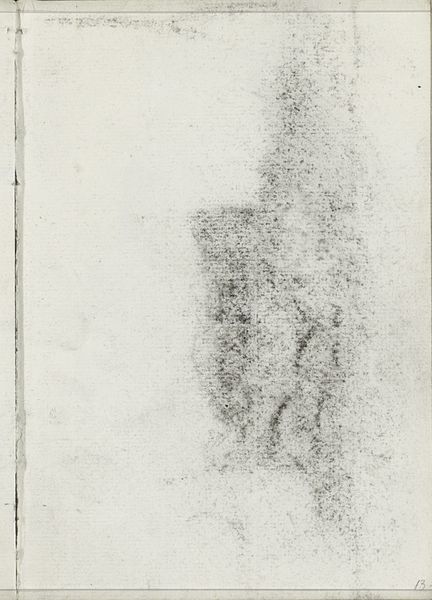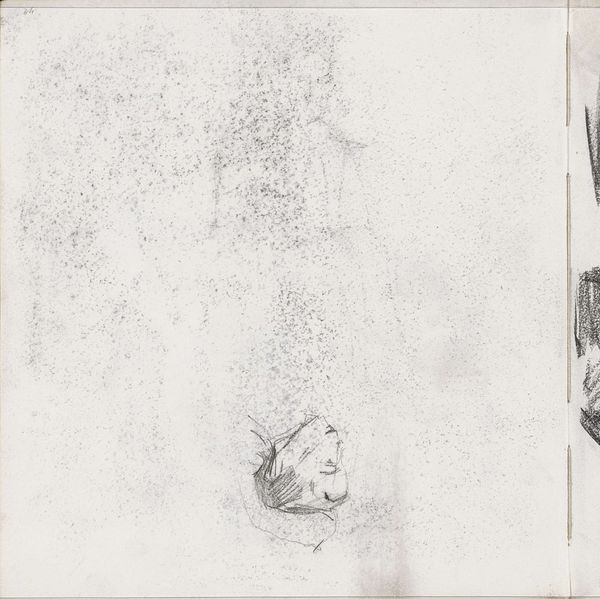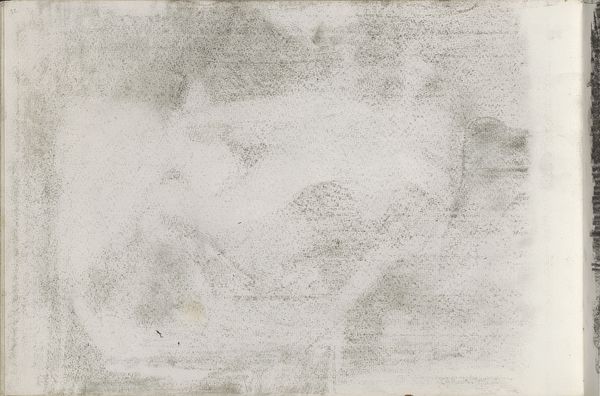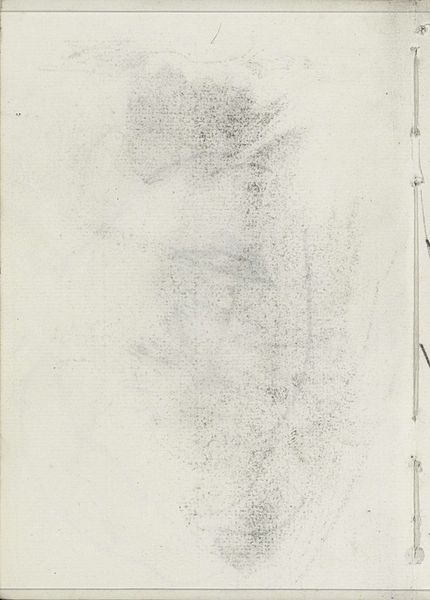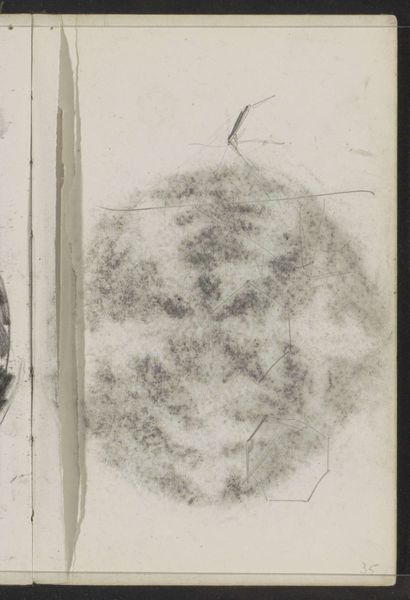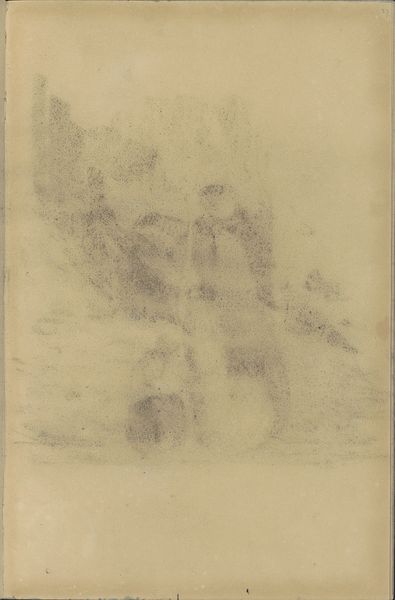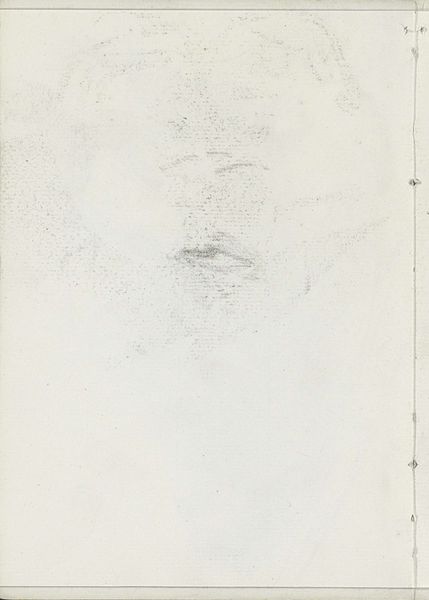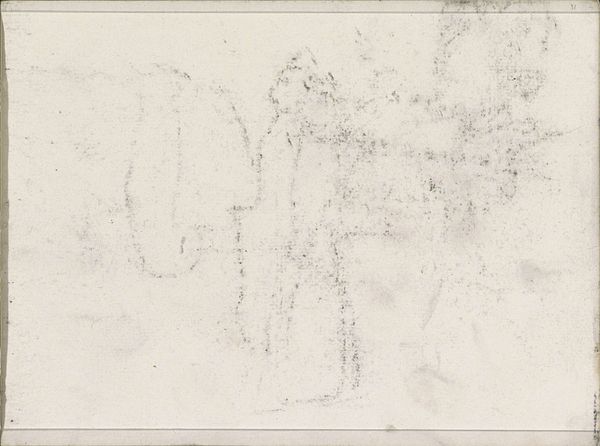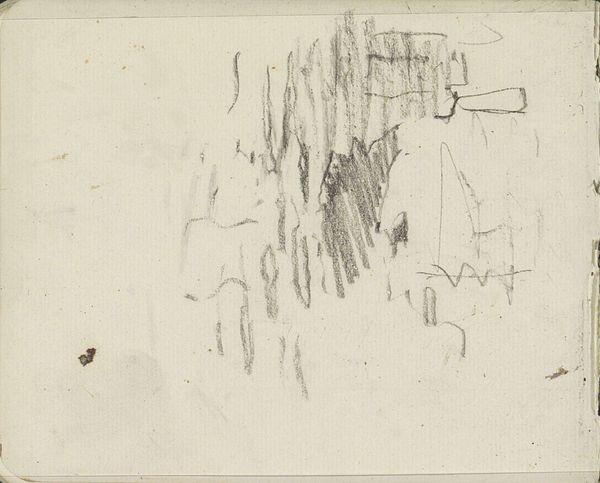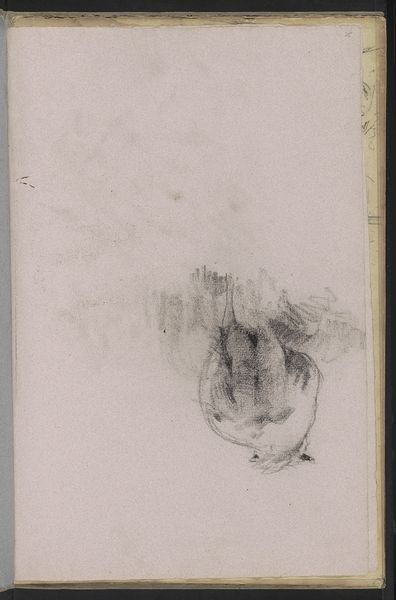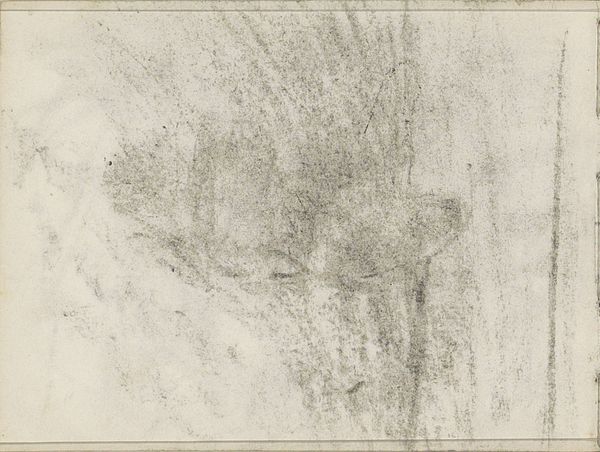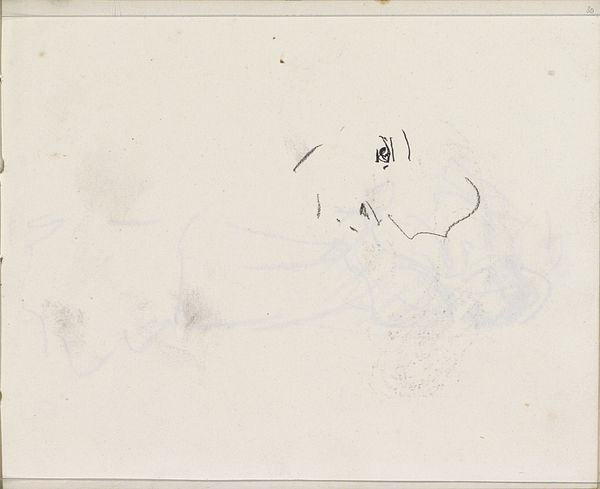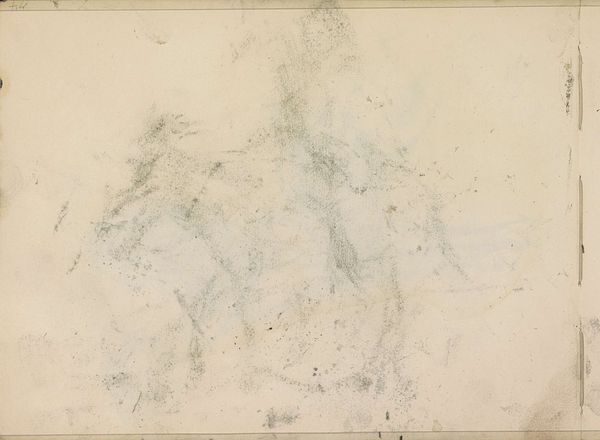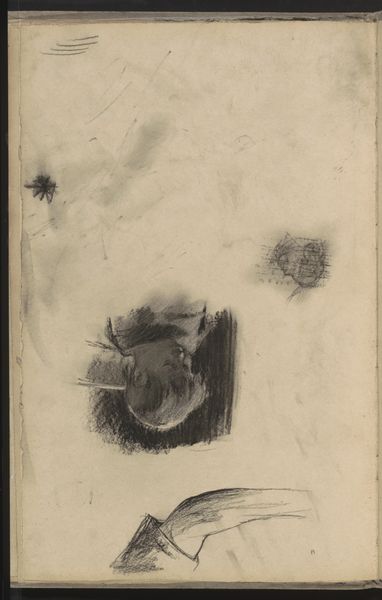
drawing, paper, graphite
#
drawing
#
impressionism
#
landscape
#
paper
#
form
#
abstraction
#
graphite
Copyright: Rijks Museum: Open Domain
Editor: This is "Studie" by George Hendrik Breitner, around the 1880s. It’s a graphite drawing on paper, and it’s currently held in the Rijksmuseum. There’s something incredibly stark and elemental about this work. What do you see in this piece? Curator: What strikes me immediately is the way Breitner uses minimal form to convey a monumental subject, almost like a fragment of a dreamscape. Look at the boldness of the graphite against the bare paper, almost brutal in its directness. It echoes the symbolist movement of the late 19th century, using visible forms to represent invisible, deeper meanings. Does it remind you of anything you’ve seen? Editor: It has the kind of abstracted landscape I've seen in some East Asian scroll paintings… But, this also feels like something is emerging or collapsing... Curator: Precisely. The drawing, though unfinished, pulses with symbolic potential. Consider the use of stark black against the void. The contrast symbolizes light and darkness, good and evil, the conscious and the unconscious. The ambiguity is the point, inviting our own projections and interpretations. How does the medium contribute? Editor: The medium seems like a deliberate choice; it isn't precious or trying to be. Graphite is very raw, almost like cave paintings. Curator: A keen observation. The primal nature of graphite strengthens its tie to fundamental aspects of the human experience. It reminds us that the study of forms goes hand-in-hand with the forms of thought itself. Editor: This work definitely underscores the potency found within even the most rudimentary visual language. Curator: Indeed, and it reflects how artists throughout history have turned to basic materials to express complex realities, making art a continuous symbolic dialogue across generations.
Comments
No comments
Be the first to comment and join the conversation on the ultimate creative platform.
